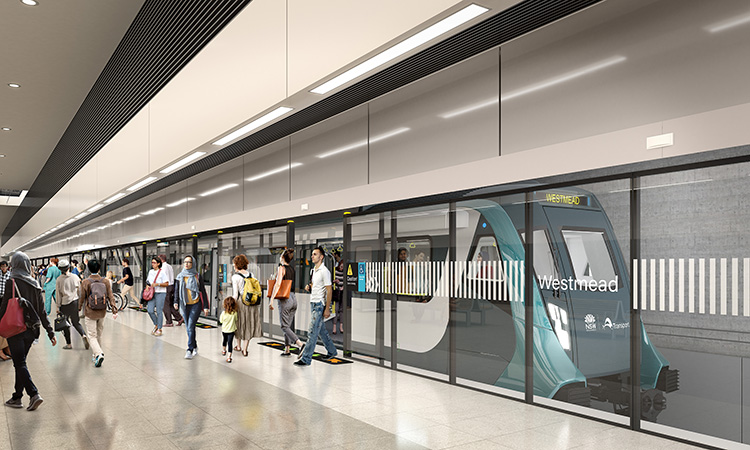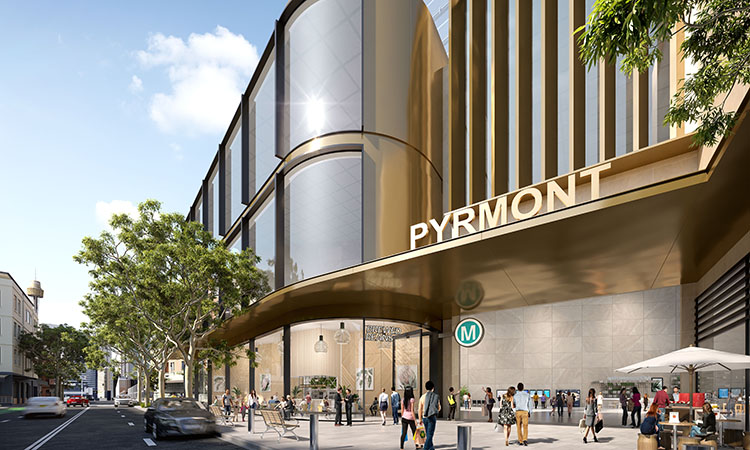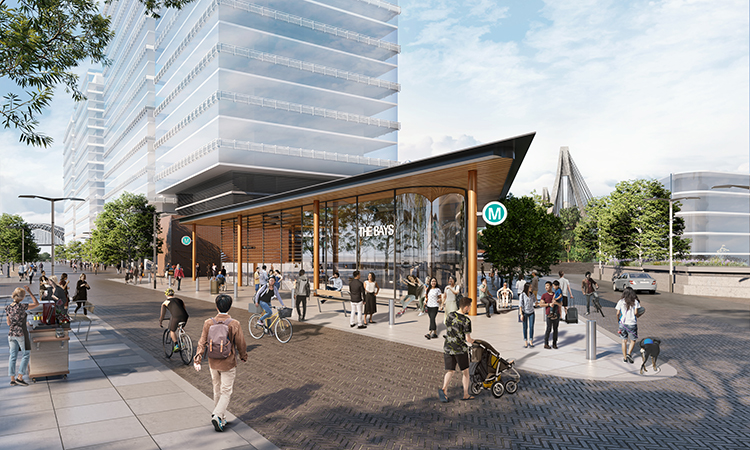Delivering an easy customer experience for Sydney Metro West
- Like
- Digg
- Del
- Tumblr
- VKontakte
- Buffer
- Love This
- Odnoklassniki
- Meneame
- Blogger
- Amazon
- Yahoo Mail
- Gmail
- AOL
- Newsvine
- HackerNews
- Evernote
- MySpace
- Mail.ru
- Viadeo
- Line
- Comments
- Yummly
- SMS
- Viber
- Telegram
- Subscribe
- Skype
- Facebook Messenger
- Kakao
- LiveJournal
- Yammer
- Edgar
- Fintel
- Mix
- Instapaper
- Copy Link
Posted: 12 July 2022 | Rebecca McPhee - Sydney Metro | No comments yet
Rebecca McPhee, Deputy Chief Executive of Operations, Customer and Place-making at Sydney Metro, provides exclusive insight into the Sydney Metro West project, and explains why a customer-centred methodology was applied to the planning, design and delivery of Australia’s biggest public transport infrastructure programme.


Credit: Sydney Metro


Credit: Sydney Metro
Sydney Metro West is a new 24-kilometre metro line that will connect Greater Parramatta with the Sydney Central Business District (CBD). Confirmed stations include Westmead, Parramatta, Sydney Olympic Park, North Strathfield, Burwood North, Five Dock, The Bays, Pyrmont and Hunter Street in the Sydney CBD.
Throughout this project’s planning, design and delivery, the customer has been at the heart of all decisions”
This infrastructure investment will double the rail capacity of the Greater Parramatta to Sydney CBD corridor, with a travel time target between the two centres of about 20 minutes.
Throughout this project’s planning, design and delivery, the customer has been at the heart of all decisions. At Sydney Metro, we define our customers as the communities that live around our stations during construction and everyone who interacts with our precincts, stations, staff and services.
Sydney Metro is committed to delivering an easy customer experience by designing a seamlessly integrated service, where the stations, trains and precincts are connected in an end-to-end journey. Designing an easy experience informs every part of our planning of projects, services and places.
Customer-centric design
The ongoing design and delivery of Sydney Metro West will focus on the customer, their needs and behaviours. We actively engage our customers early and often to understand their needs and expectations. We use these insights to shape everything that we deliver or enable for our customers.
The ongoing design and delivery of Sydney Metro West will focus on the customer, their needs and behaviours”
It is essential to understand the journeys that people take, both now and into the future, to elevate the use of public transport in Sydney and ensure that it becomes a genuinely world-class city with equitable access for all.
To help define this, Sydney Metro has created a ‘door-to-door-to-door’ journey map that outlines customers’ needs and expectations at each stage of their journey. By understanding these journeys, we can target key customer issues to eliminate as many of these as possible through the thoughtful design of products, places, systems and spaces.
A customer-centred methodology has been applied to Metro West to understand how customers think about and interact with public transport to improve their future experience. Putting the customer at the centre of the process and designing for their needs means that the service is more likely to be valuable and enjoyable for future users.


Credit: Sydney Metro
Metro West research objectives
Building on lessons learned on the Metro North West Line and based on Sydney Metro West’s unique attributes, three key areas were chosen for further investigation during the customer-centred approach to design, which would provide the greatest insight into customer behaviour in mass transit and underground environments, like Metro stations.
Interchange
Identified as a key issue for customers in the current public transport experience, Sydney Metro focussed on understanding the critical elements and triggers that make an easy interchange experience, and how these can best be delivered across the line.
Underground movement and flow
As Sydney Metro West will be an underground transport service, Sydney Metro needed to know how customers feel about travelling and using underground stations – a new and often unfamiliar experience compared with a number of stations on the current Sydney Metro and Sydney Trains network.
Event mode
Considering the significance of connecting customers to Sydney Olympic Park – a key precinct for Sydney Metro West – and to understand and design for event experiences and how large numbers of customers travel to and from key venues during major events.
Approach
Customer experience research includes a 1:1 interview with a combination of 3D flythroughs, use of virtual models and discussion on the customer’s use of transport and public space. Customers were asked to navigate within the model and provide real-time feedback.
The benefit of virtual testing is that it allows participants to immerse themselves in the virtual station environment for the first time to provide feedback and insights based on their experience.
Understanding the performance of the design in providing an ‘easy’ customer experience through each stage of the design process is critical to the development of a great customer experience”
This further enabled customers to gain a sense of the station experience and better comprehend the experience of moving in and out of the station, going between interchange locations.
At Sydney Metro, a consistent customer metric is used at all stages of the project to reflect the ease of the travel experience for customers. Understanding the performance of the design in providing an ‘easy’ customer experience through each stage of the design process is critical to the development of a great customer experience and measurement of continuous improvements.
Recruitment
An important part of this customer-centric approach is to establish a robust framework for collecting a representative sample of customers with different backgrounds and public transport experience levels.
Diversity of thought and experience is critical for achieving a design that is as safe, accessible and inclusive to allow our services and environments to be accessed by all customers”
To assist with recruitment, Sydney Metro has established a set of four key personas that represent the different types of Metro customers. They have been created following extensive research on earlier metro projects and form part of Sydney Metro’s core customer values. Each persona describes the customer’s needs, expectations and requirements, and how they will use Sydney Metro.
In addition to the breakdown of personas, recruitment requirements also targeted customers with restricted mobility, including those with physical, visual or cognitive access considerations. Diversity of thought and experience is critical for achieving a design that is as safe, accessible and inclusive to allow our services and environments to be accessed by all customers.


Credit: Sydney Metro
Analysing customer feedback
Synthesis and analysis of the data collected during customer testing helps to validate design assumptions and lead to individual project teams’ higher level of understanding of customer needs. Insights help to inform design throughout the process and are shared internally with other groups.
An internal customer focus at Sydney Metro creates shared ownership in delivering this experience and is integral to creating an iterative loop of concept development, customer testing and feedback within the wider teams to ensure that the best possible outcomes for customers were achieved.
Key research highlights
Numerous line-wide insights emerged from the findings collected during customer testing.
Customers saw opportunities to design strong local connections and reinforced a sense of place identity. To create a true destination with its own identity, reflecting the area’s history and character, customers want to be drawn into a place where they can gather, relax, explore, be entertained, connect with the community and spend their leisure time.
Customers saw opportunities to design strong local connections and reinforced a sense of place identity”
There was a desire for customers to see stations introduce living elements and natural light into the underground environment where possible to help reduce the feeling of claustrophobia and to enable a positive and safe underground experience. They asked for colour, artwork and architectural features which foster a warm and inviting environment.
The majority of customers with cognitive disabilities and parents with children with a cognitive disability expressed the importance of biophilic design elements or principles to help minimise risk of negative reactions, allowing a boost in their concentration levels, and to help to minimise stress and anxiety while traveling underground.
Customers also desired night-time activation at certain precincts and suggested cafés that open later, small bars and family-friendly restaurants to improve safety and security. They recognised that commercial space activations and human presence impacts the safety of the precinct and opening hours that cover the full spread of the operational service.
They also suggested the use of ambient lighting or light installations where possible, to make the precinct feel welcoming at night, and to ensure that dark corners are well lit.
Conclusion
Understanding what drives customer value and their perceptions enables us to design products and services for customer needs to ensure that the design holds customer value and delivers an easy experience”
Sydney Metro West is still in the early phases of design, and we will continue to conduct additional customer research activities throughout the project management lifecycle. Understanding how the design impacts customers will allow ongoing assessment of risks at each phase of the project lifecycle. Understanding what drives customer value and their perceptions enables us to design products and services for customer needs to ensure that the design holds customer value and delivers an easy experience now and for future metro customers.
Rebecca McPhee, Deputy Chief Executive of Operations, Customer and Place-making at Sydney Metro, is responsible for providing leadership and direction for the operational management, future development and place-making and planning activities of Sydney Metro – Australia’s biggest public transport infrastructure programme, developing and delivering a new world-class metro railway system for Sydney. Her focus is on ensuring the delivery of high-quality customer outcomes, as well as vibrant precincts that boast a strong sense of community ownership.
Related topics
Accessibility, Journey Planning, Mobility Services, Passenger Experience, Public Transport
Issue
Issue 2 2022
Related modes
Metro
Related cities
Sydney
Related countries
Australia
Related organisations
Sydney Metro
Related people
Rebecca McPhee








